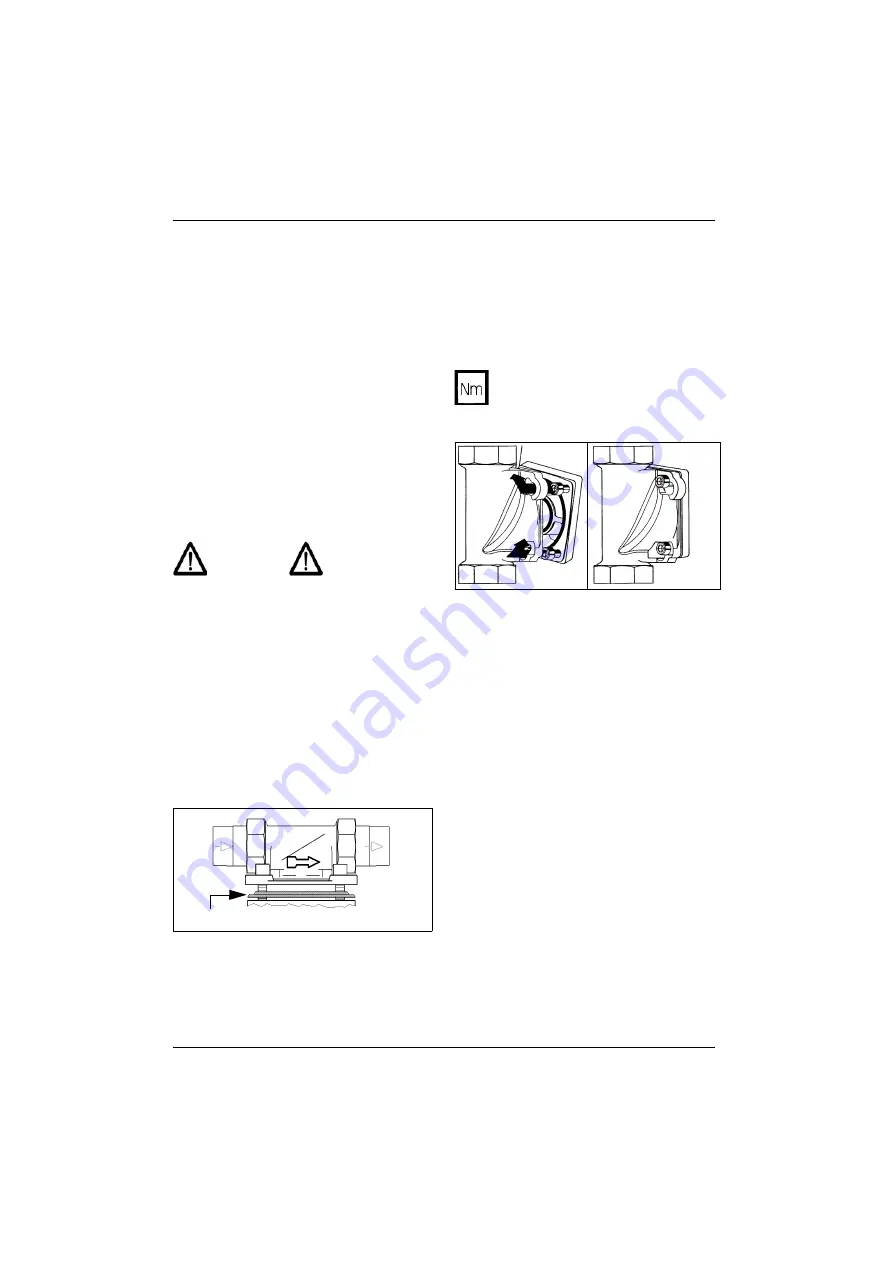
JUDO i-soft
11
Installation
4.2
Mounting the softener without
a bypass valve
–
Firstly flush the pipe with the newly
installed rotary flange (JQE).
–
Then block off the water again (at the
main water tap or blocking valve)
and remove the assembly cover of the
built-in rotary flange.
The connection flange of the softener is
covered by a white protector cap. This pro-
tector cap is secured by two cylinder screws
M6x130 and two threaded bolts M6x137
with nuts.
Prior to removing the protector cap, the two
threaded bolts M6x137 with nuts have to be
removed and replaced with the provided
cylinder screws M6x130.
ATTENTION
Do not grasp into the connection flange
of the device after removing the white
protector cap (danger of high level pres-
sure)!
–
Loosen all four cylinder screws M6x130,
but don’t remove them (bayonet fixture)!
–
Remove the white protector cap.
The section of the profiled flange gasket
must point towards the built-in rotary flange.
Failure to observe this can lead to leaks and
water escaping. This can in turn cause water
damage to the house and its installations.
–
Lift up the softener and swivel it through
approx. 30° in an anti-clockwise direction.
–
Position it on the built-in rotary flange so
that the screw heads pass through the
bayonet fixing drill holes (see fig. 7 I).
–
Swivel the softener through approx. 30°
back in a clockwise direction.
–
Tightly fasten the four cylinder screws
M6x130 (see fig. 7 II).
After assembling the softener unscrew the
wall support so far that it rests against the
softener casing and the softener hangs
vertically to the wall.
4.3
Mounting the bypass valve
(accessories)
When assembling a bypass valve between
the built-in rotary flange and and the softe-
ner an additional bypass piping becomes
superfluous to requirements.
–
Firstly flush the pipe with the newly
installed rotary flange (JQE).
–
Then block off the water again (at the
main water tap or block-off valve) and
remove the assembly cover of the built-
in rotary flange.
–
Connect the bypass valve on the flange
side with the cast in letter “R” (pipe
flange) to the built-in rotary flange by
engaging the bayonet fitting (see fig. 8).
Fig. 6:
Profiled flange gasket
profiled flange gasket
Select the torque (approx. 4 Nm) so
that the gasket closes and the
softener is not damaged or strained!
Fig. 7:
Built-in rotary flange with bayonet fixture
I
II
Содержание i-soft
Страница 3: ...JUDO i soft 3...
Страница 29: ...JUDO i soft 29 Data sheet Fig 19 Electrical circuit with failure signal relay...












































